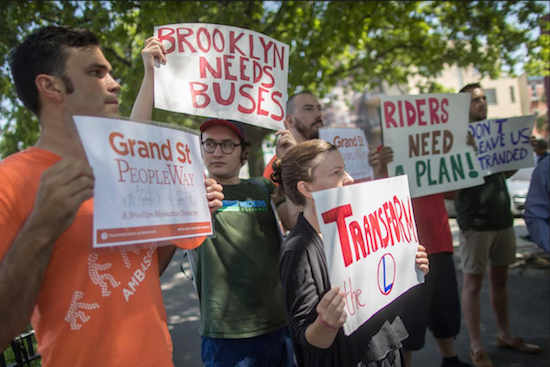‘Summer of Hell’ hits Brooklyn transit system
Transit Advocates, Elected Officials, Brooklyn Businesses Call on DOT & MTA to Provide Stronger Service Replacements During the Canarsie Tunnel Closure

On Wednesday, L train riders, elected officials and transit advocates held a rally to push the New York City Department of Transportation (DOT) and MTA to ensure riders that they’ll have a dedicated bus network to replace the L train during the shutdown. Advocates also called for MTA to use the shutdown to make station improvements that will allow more L trains to run during peak hours after the shutdown ends, according to a release from the Riders Alliance.
Democratic Gov. Andrew Cuomo predicted a “summer of hell” regarding the transit crisis, and the governor’s approval ratings are slipping amid the start of repairs, reports the Associated Press. Respondents to a Quinnipiac University poll gave Cuomo low grades for New York City transit, with nearly a third awarding a “D” or an “F.”
While MTA and DOT have engaged in a series of public meetings and released plans showing some of the replacements that will be available for commuters during the shutdown, advocates are calling on the agencies to commit to three important changes for riders: A robust bus network, additional station improvements and specific commuting options for populations farther along the L-train line in neighborhoods like Brownsville and East New York.

Brooklyn Boro
View MoreNew York City’s most populous borough, Brooklyn, is home to nearly 2.6 million residents. If Brooklyn were an independent city it would be the fourth largest city in the United States. While Brooklyn has become the epitome of ‘cool and hip’ in recent years, for those that were born here, raised families here and improved communities over the years, Brooklyn has never been ‘uncool’.